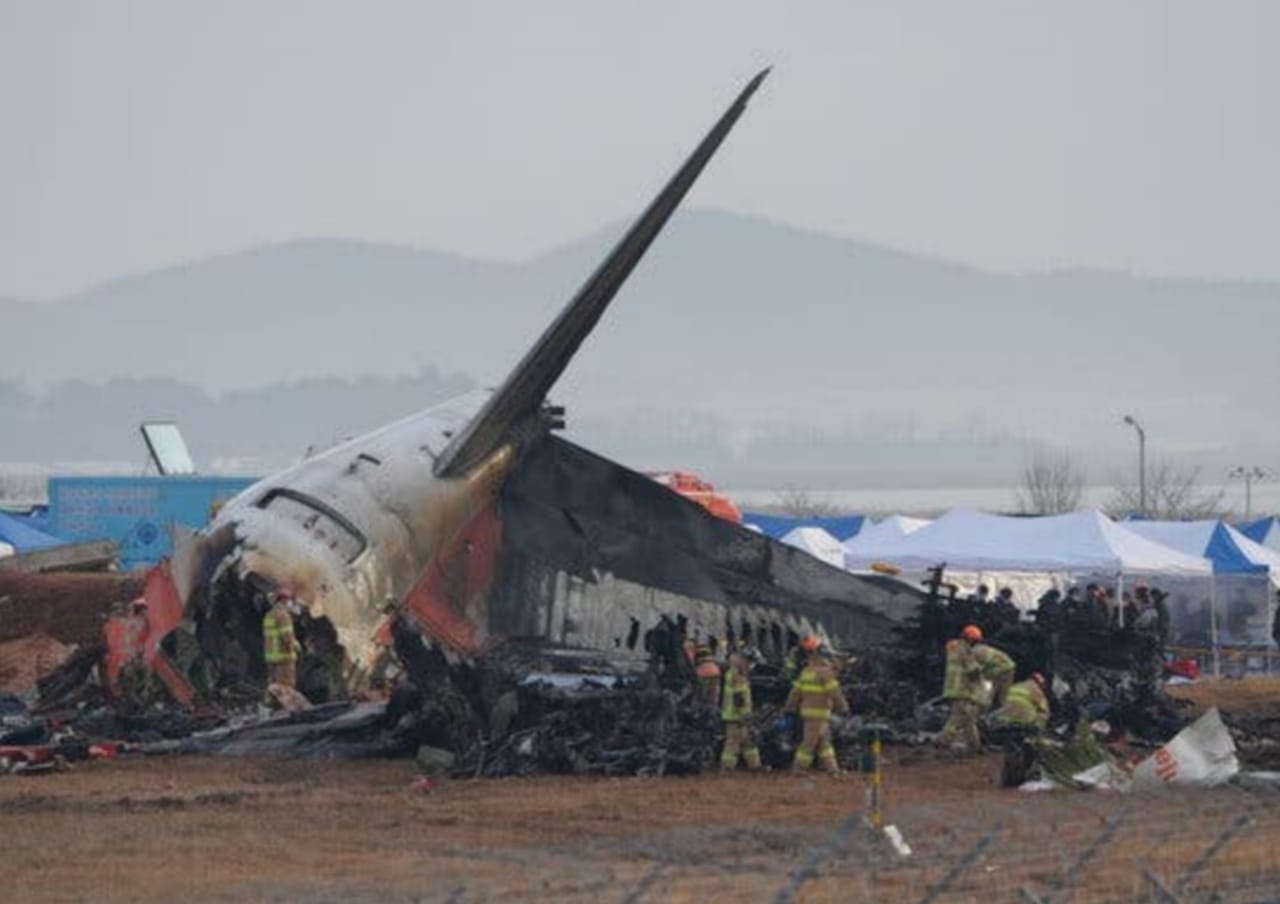
South Korea’s aviation safety board has found that one of the engines on the Jeju Air flight that crashed at Muan International Airport in December was still working when the pilots shut it down. Investigators say this decision, made within seconds of a bird strike, likely hurt the aircraft's chances of landing safely.
The preliminary report from the Aircraft and Railway Accident Investigation Board indicates that the pilots turned off the left engine just 19 seconds after the aircraft hit a flock of birds. Flight data and cockpit voice recordings show that the left engine was still producing thrust when it was shut down. The right engine, which suffered more damage from the bird strike, continued to work until the crash.
The aircraft, a Boeing 737-800 with 181 people on board, was trying to make an emergency landing when it approached the runway without its landing gear down. The plane skidded off the runway and hit a concrete navigation structure before bursting into flames. Only two cabin crew members survived. This incident has become South Korea’s deadliest aviation accident since the 1997 Korean Air crash in Guam, which took 228 lives.
Investigators think the early shutdown of the less-damaged engine likely weakened the pilots’ ability to control the aircraft. While no blame has been assigned yet, authorities have confirmed that the aircraft might have stayed airborne or landed more safely if the engine had stayed on.
Aviation experts have compared this incident to the 1989 Kegworth air crash in the United Kingdom, where pilots mistakenly shut down a working engine after a mechanical issue. While South Korean investigators have not officially mentioned that case, the similarity in cockpit decisions under pressure has been noted in international aviation discussions.
The investigation has angered the families of the victims and the pilots’ union. Relatives have criticized the report as incomplete and have questioned whether focusing on pilot error overlooks larger systemic problems. They have called for a more transparent inquiry that also looks at the role of airport infrastructure, communication systems, and emergency response.
There is also concern regarding the concrete navigation structure the plane hit after leaving the runway. The Ministry of Land, Infrastructure and Transport has announced plans to replace similar structures at seven domestic airports. These will be redesigned using buried or breakaway materials to comply with international safety standards and reduce the risk of deadly impacts.
The pilots’ union has raised concerns about the investigation's scope. A spokesperson stated that the available evidence requires further analysis and warned against oversimplifying the clearly complicated emergency. The union has called for a wider review of flight training, cockpit alert systems, and airline emergency protocols.
The investigation is still ongoing. Authorities expect the final report, due by June 2026, to give a more detailed analysis of the technical, operational, and human factors involved in the crash.
The Jeju Air disaster has left 179 families grieving and a country seeking answers. While the preliminary findings provide a clearer view of the events leading to the crash, they also raise urgent questions about how a functioning engine was shut down in mid-air and why safety measures failed to prevent such a tragic loss of life.